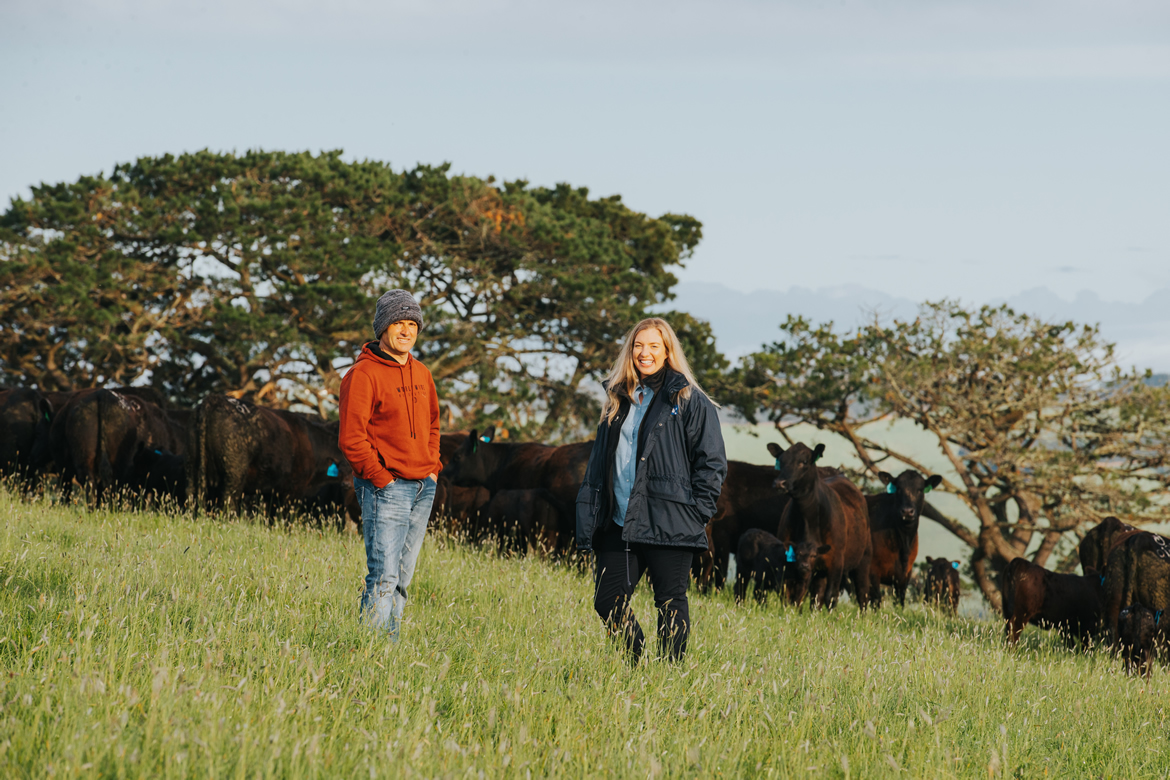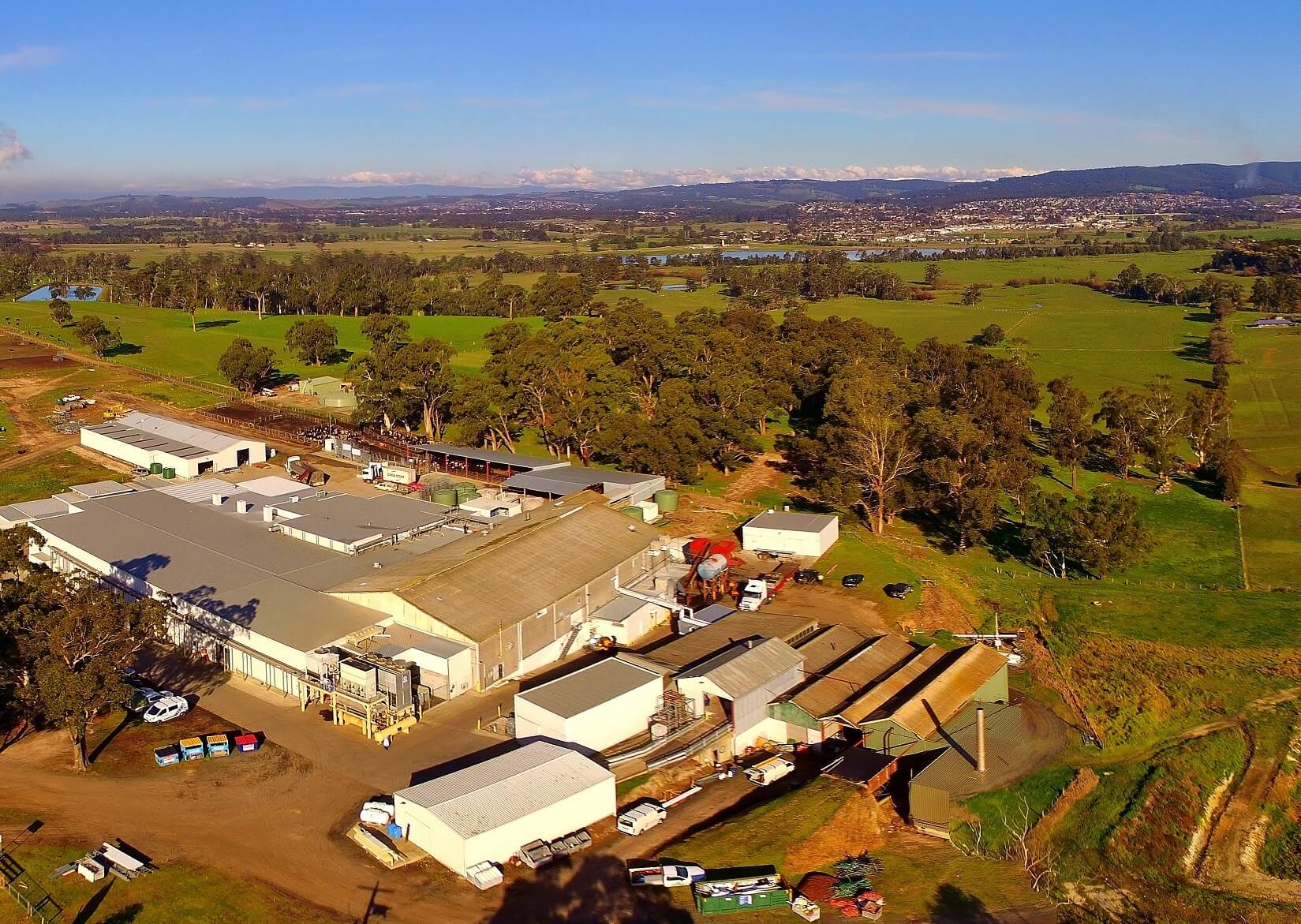| SNAPSHOT | |
| PROPERTY | Harris Farms, Dumbalk VIC |
| AREA | 1,200ha across six properties at Dumbalk, Yarram, Tarwin, Buffalo and Mardan |
| ENTERPRISE | 700 predominantly Angus cows and calves1,480 predominantly Coopworth ewes and lambs plus a small Southdown stud of about 80 ewes140 Angus stud bulls |
| PASTURE | Rye and clover |
| SOIL | Varies across the six properties; from sand at Yarram, to red soil at Dumbalk, down to peat at Tarwin |
| RAINFALL | 1,000mm at Buffalo 730mm at Yarram |
Fourth-generation Gippsland cattle producer, Shane Harris, farms by five core tenets: high animal welfare, rotational grazing, breeding hardy cattle with the consumer in mind, and not skimping on time and money when it comes to maintaining good fences, and ground cover.
“These five things sum up our approach – if you let one thing drop, the whole system will start to slip,” he said.
“We try to run as simple and natural a system as possible with the outcome being resilient animals that require less intervention from us.”
By working with the land and seasonal cycles, Harris Farm’s stocking rate has increased and stabilised over the past 10 years, to now running one animal unit equivalent (UAE) to every 0.6ha (calves are weaned off the cow after six months and moved to a different paddock).
“Our stocking rate is high but because of our focus on consistent, resilient animals, we’re able to maintain that density,” he said.
“10 years ago we didn’t have a consistent animal type and we didn’t measure our productivity per ha. It’s taken a long time a to get to this point.”
In an average year, the Harris’ turn off up to 800 head a year to Greenham’s Moe processing facility, targeting 260-280kg live weights. Trade cattle are predominantly sourced from south Gippsland at around six to eight months old.
Animal welfare
As NEVER EVER accredited producers, the Harris’ are required to use pain relief for castration, disbudding and dehorning but Shane says it really comes down to “common sense”.
“The program requirements are easy to implement because it’s really just things that were already core to our business,” he said.
“We want the animals to get back to doing what they normally do sooner i.e. grazing and putting on weight.
“When we look at the cost versus benefit, the cost of pain relief more than pays for itself in keeping our options and access to leading premium markets open. It’s the future.”
The Greenham NEVER EVER program was established in 2012 to source, certify and promote premium quality natural grassfed beef from breeders and finishers across southern Australia Eligible cattle must be 100% grassfed no added hormones, no antibiotics ever, lifetime traceability, never confined to a feedlot, MSA accredited and free of GMOs.
Animal welfare concerns are a growing consumer purchase driver. The NEVER EVER beef program was designed to address these concerns with the inclusion of the Certified HumaneTM animal welfare standard in 2017, which requires pain relief during routine animal husbandry practices.
More than 4,000 producers across Tasmania, Victoria, South Australia, and southern New South Wales are now accredited under the NEVER EVER program.
Rotational grazing
At the Harris’ home block at Dumbalk, heifers are run in one 190- head mob and are rotated according to the season; every four days in winter and up to 10 days in spring.
Depending on the season and property, they aim to spell paddocks for between 40 and 50 days.
“We operate a slightly different model at every property as while there may only be an hour’s drive between them, the production system and average rainfall is so distinct at each,” he said.
Water is sourced from dams, reticulated around the property, and fed to troughs in each paddock.
“For us the benefits of rotational grazing are invaluable,” he said.
“We grow twice as much feed as it helps us manage weeds and promotes the better species of grass.
“Our soils are much healthier and it’s the key to reducing our worm burden.”
The Harris’ rotationally graze for eight months of the year, turning to set stocking in spring for calving.
“We time calving to the spring as that’s when it makes the most sense, seasonally; it’s when we have the most feed available to support the extra pressure on our pasture,” he said.
Breeding
Consistent animals with high eating quality, efficient feed conversion and resilience to worms underpin Shane’s approach to breeding and maintaining a high stocking rate.
“We’re aiming for the most economic animal so that when the season is tight, they’re holding condition as well as possible, and when the season is good, they’re putting on weight as quick as possible,” he said.
“We’ve made a lot of mistakes along the way, but the biggest lesson has been that there’s no one-size-fits-all approach – you have to keep trialing genetics to find what fits your production system and goals.”
Having previously owned a butcher shop, Shane understands the importance of consistency.
“Retailers and restaurants all want a consistent product with high eating quality so they can market it, and their customers are confident they’re going to get top quality, every time,” he said.
“That’s why we focus on using older, proven bulls that we know are going to perform.”
Fencing
“While maintaining fences takes up a lot of our time, waiting until there’s a problem would take up even more,” Shane said.
“Rotational grazing is the foundation to so much of our business, but it doesn’t work without good fencing.
“We need to know that when we leave cattle in a paddock, they will be there when we come back, and the pasture in the next paddock over hasn’t been compromised by a few greedy cows breaking through a fence early.”
Ground cover
Avoiding over grazing, applying fertiliser as needed and instilling in each team member the importance of being proactive to spot spray and act when they see weeds, form the bedrock of Shane’s philosophy when it comes to maintaining ground cover.
“Weeds can take over pretty quickly so it’s important to stay on top of it early so it doesn’t become a big, expensive job down the line,” Shane said.
To promote the better grass species, pasture growth and overcome autumn ill-thrift, each autumn fertiliser is applied to pastures at between 80kg per 0.6ha, alternating as needed between 3-in-1 and Super.
Key points
- Shane says the application of pain relief as required by the NEVER EVER program is “common sense” and delivers value by increasing access to premium markets
- Rotationally grazing according to seasonal conditions has increased pasture production and quality
- Investment in good fencing and ground cover, reduces time, effort and costs down the line, while “increasing enjoyment”
- Fencing off dams and feeding water into troughs via a reticulated system enables rotational grazing and maintains weight gains in the summer months
- There’s no silver bullet when it comes to breeding; keep trialing genetics to find what fits your production system and goals, and closely monitor weights and carcase results, and compare bulls against bulls in your system.
Contact your local Greenham cattle buyer for more information about the NEVER EVER Beef Program.













